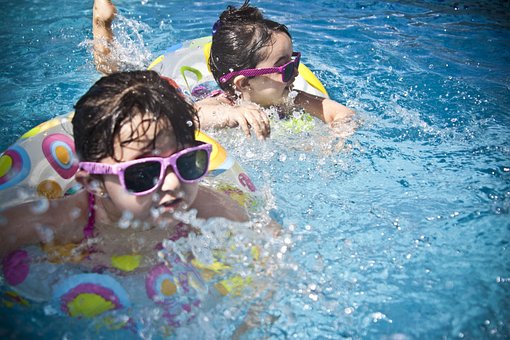Swimming Safety Tips: How to Avoid Common Swimming-Related Injuries

Swimming Safety Tips: How to Avoid Common Swimming-Related Injuries
Swimming is a fun and refreshing activity for people of all ages. However, like any other sport, swimming carries the risk of injuries. Whether you're a beginner or a seasoned swimmer, it's important to be aware of the potential hazards of swimming and take steps to minimize your risk of injury. In this article, we'll provide some essential safety tips for swimmers to help them avoid common swimming-related injuries.
9 Safety Tips for Swimmers to Avoid Injuries
Always Warm Up
Before diving into the pool, it's important to spend a few minutes warming up your muscles. This can help prevent muscle strains and other injuries. A good warm-up should include light exercises that increase your heart rate, such as jogging or jumping jacks, and stretching to loosen up your muscles.
Know Your Limits
Swimming can be challenging, especially if you're not used to it. It's important to know your limits and not push yourself too hard or too fast. If you're a beginner, start with shorter, less intense swims and gradually work up to longer, more challenging workouts.
Stay Hydrated
Swimming can be a dehydrating activity, even if surrounded by water. Ensure you drink fluids before, during, and after your swim to avoid dehydration. Water is the best choice, but sports drinks can help replenish lost electrolytes.
Wear Proper Swimwear
Swimming requires specific clothing that allows for easy movement in the water. Wear a swimsuit that fits properly and is appropriate for the swimming you'll be doing. If swimming in open water or a pool with many people, consider wearing a brightly colored swim cap or rash guard to make yourself more visible.
Practice Good Hygiene
Swimming pools and other bodies of water can harbor bacteria and other harmful organisms that can cause infections. To prevent the spread of illness, shower before and after swimming, avoid swallowing pool water, and stay out of the water if you have an open wound.
Watch Out for Hazards
While swimming, watch for potential hazards in and around the water. This can include sharp edges on pool tiles, rocks or debris in open water, and other swimmers who may not follow proper safety protocol. If you see a hazard, report it to the appropriate authority to address it.
Learn Proper Technique
Proper swimming technique is essential for avoiding injuries and getting the most out of your workout. If you're new to swimming or want to improve your technique, consider taking a swimming lesson or working with a coach. They can help you learn proper breathing, strokes, and form to reduce your risk of injury.
Don't Swim Alone
Swimming alone can be dangerous, especially if you're not an experienced swimmer. Always swim with a buddy or in a group to ensure someone is there to help in an emergency. Consider using a flotation device or other safety equipment if swimming in open water.
Be Prepared for Emergencies
Even if you follow all the safety tips, accidents can still happen. Make sure to have a plan in case of an emergency, such as knowing the location of the nearest lifeguard or having a first aid kit on hand. If swimming in open water, familiarize yourself with buoys, boats, and other emergency equipment locations.
In conclusion, swimming is a great way to stay fit and have fun, but knowing the potential hazards and taking steps to minimize your risk of injury is important. By following these safety tips, you can enjoy all the benefits of swimming while staying safe and healthy.
